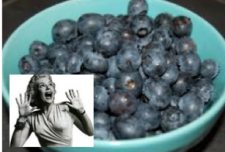 There are chemical scares and there are chemical scares. Some are valid, some are not. Some are just plain ridiculous. Today we look at ridiculous.
There are chemical scares and there are chemical scares. Some are valid, some are not. Some are just plain ridiculous. Today we look at ridiculous.
Parabens (derivatives of para-hydroxybenzoic acid, thus the name) have been used forever as preservatives. And they have been the target of consumer and environmental groups for almost as long.
Which is almost comical, considering it would be difficult to find a safer groups of chemicals.
ACSH s Dr. Josh Bloom addresses some of the Times answers to the question Are parabens dangerous? Just about all of them are wrong.
Times: The Food and Drug Administration describes them as safe, at least in the trace amounts.JB: Fine, they got something right.
Times: Their concerns grew after a 2004 study found paraben compounds in breast cancer tumors.
JB: There are probably 100,000 other chemicals in breast tumors. You guys better get busy.
Times: Although no real link to the cancer was established, research has also found that parabens are weak estrogen mimics.
JB: No link to cancer? Shocking. So now how do you continue to get funded? Yep- the old reliable estrogen mimic/endocrine disruptor nonsense. Which is astronomically nonsensical in this particular case. Even critics admit that methyl paraben the simplest and most studied member of the paraben family binds very weakly to human estrogen receptors. How weakly? About 165 thousand times less so than estradiol. In other words, zero.
Times: (Janet Gray, director of the science, technology and society program at Vassar College) Parabens are found in between 13,000 and 15,000 personal care products. So we are not talking about a single exposure but a more pervasive one.
JB: Gray is right for the wrong reason. We certainly do have a pervasive exposure. Especially if you eat blueberries, strawberries, peaches, carrots, onions, cocoa-beans, vanilla, grapes, fruit juices, cheeses, vanilla. And plenty more. Plants synthesize methyl paraben because gasp they are preservatives! They help protect the plants from bacteria and fungi. Just like they help preserve cosmetics, which actually caused some cases of blindness from bacterial infections during the time before methyl paraben was added.
Times: And a recent report in Environmental Science & Technology found that parabens were so common in products like baby lotion that infants may also receive a relatively high dose.
JB: Gimme a Valium. Not only is methyl paraben astoundingly non-toxic, but it is rapidly metabolized and excreted in the urine. (Better still, the metabolite is para-hydroxybenzoic acid an essential chemical for respiration in animals and plants.) How non-toxic? Across multiple animal species, it is difficult to even find a lethal dose. But if you give enough of anything it will be lethal. Lethal single doses of methyl paraben are in the 2-30 gram range probably more than you will ever consume in your life.
Dr. Bloom concludes, About the only way these parabens can hurt you would be if you painted some on a bullet and shot yourself. This may be the dumbest chemical scare I ve ever seen.


